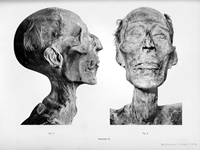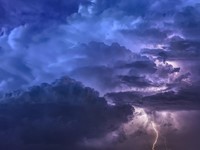The James Webb Space Telescope has studied the "starburst" galaxy NGC 4449, located 12.5 million light-years away. Starbursts are periods of high star formation, usually concentrated in the core of a galaxy, but in NGC 4449 this activity is spread over a wider area - possibly due to past interactions with its galactic neighbours.
Webb made observations in the near and mid-infrared, revealing incredible detail. Individual stars are seen as bright blue dots. The diffuse blue gradient in the core shows the distribution of old stars, while young star clusters glow yellow and are concentrated at the edges. Orange-red areas indicate the distribution of carbon-based compounds, while red regions mark hydrogen-rich areas.
Astronomers can gain important insights into the past by studying NGC 4449. This galaxy resembles early star-forming galaxies and has the characteristics of galaxies that grew by merging with other systems.
Image descriptions:
A set of two images showing the central region of a dwarf galaxy. Numerous stars fill the entire galaxy as small glowing dots. They are at their brightest around the galaxy's glowing core. Thick clouds of gas and dust are scattered throughout the scene, twisting like moving flames. These clouds glow in varying hot colours depending on their position: orange around the galaxy's core and the glowing star clusters in the lower left, and deep red in other areas.


 Nielawore
Nielawore









Yorum yazmak için lütfen giriş yapınız